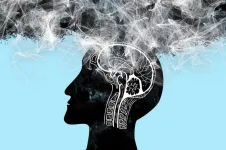(Press-News.org) EMBARGOED FOR RELEASE UNTIL 4 P.M. ET, WEDNESDAY, SETEMBER 13, 2023
MINNEAPOLIS – Nearly one in five people on Medicare travel 50 or more miles one way to see a neurologist, a doctor who diagnoses and treats diseases of the brain and nervous system, according to research published in the September 13, 2023, online issue of Neurology®, the medical journal of the American Academy of Neurology (AAN). The study, funded by the American Academy of Neurology, found that people who require specialized neurologic care for diseases such as brain cancer, amyotrophic lateral sclerosis (ALS) and multiple sclerosis (MS) travel long distances most often.
“Our study found a substantial travel burden exists for some people with neurologic conditions, including people living in areas with fewer neurologists and rural areas,” said study author and Chair of the American Academy of Neurology’s Health Services Research Subcommittee Brian C. Callaghan, MD, MS, FAAN, of University of Michigan Health in Ann Arbor. “We also found that people who traveled long distances were less likely to return for a follow‐up visit with a neurologist.”
“Travel distance can be a serious barrier to care for people with chronic neurologic conditions,” said American Academy of Neurology President Carlayne E. Jackson, MD, FAAN. “The American Academy of Neurology is committed to improving access to high-quality neurologic care because consistent access to specialized care from a neurologist is essential to help people manage their symptoms and minimize risks of dangerous complications and side effects.”
The study included over 563,000 people on Medicare who saw a neurologist at least once during the one-year study. Participants had an average age of 70. Researchers looked at age, sex, race and ethnicity and neurologic condition for each participant. During the study 14,439 neurologists provided care to participants in more than 1.2 million office visits.
To determine travel distance, researchers compared participants’ home zip codes and their neurologists’ office zip codes. Long distance was defined as 50 or more miles one way.
Over 96,000 people, or 17%, traveled long distances, with an average of 81 miles one way and an average travel time of 90 minutes.
People who did not travel long distances went an average distance of 13 miles with an average travel time of 22 minutes.
Among neurologic conditions, long‐distance travel was most common for people with brain and spinal cord cancers, with 40% of these participants traveling long distances; ALS, 30%; and MS, at 23%.
Researchers found many factors were associated with long‐distance travel. People who lived in areas with the fewest neurologists, 10 neurologists per 100,000 Medicare beneficiaries, had a three times greater chance of traveling long distance than people living in areas with the most neurologists, 50 per 100,000 Medicare beneficiaries. People who lived in rural areas had a five times greater chance of traveling long distances than people living in urban areas. Also, people who traveled long distances to see their primary care physician had a three times greater chance of long-distance travel to see a neurologist.
Nearly one-third of participants bypassed the nearest neurologist by 20 miles or more to see a neurologist, and 7% of people crossed state lines for neurologic care. Callaghan noted, “It is possible some people bypass the nearest neurologist as a matter of preference for a particular physician or they may need to travel farther to reach neurologists with shorter wait times.”
When looking at over 165,000 participants who visited a neurologist for the first time within the first three months of the study, 62,000 had at least one follow-up visit with the same neurologist. Participants who traveled long distances had a 26% decreased chance of a follow-up visit compared to those without long-distance travel.
“Our results suggest that policymakers should investigate feasible and affordable ways to improve necessary access to neurologic care, especially in areas with low availability of neurologists and in rural communities,” said study author Chun Chieh Lin, PhD, MBA, of Ohio State University in Columbus and a member of the American Academy of Neurology. “Interventions such as telemedicine can improve access to care. Future research should examine the differences in health outcomes between people who must travel long distances for care and those who do not.”
Because this study was conducted in 2018, before the COVID-19 pandemic, Lin noted that future studies should look at how telemedicine during the pandemic impacted travel times.
One limitation of the study was that researchers were able to measure travel only for those who completed neurologist visits. They were not able to measure travel for those who were referred to but unable to see a neurologist. Another limitation was that researchers only studied Medicare beneficiaries, so the results may not be the same for other populations.
The study was supported by the American Academy of Neurology.
Learn more about brain health at BrainandLife.org, home of the American Academy of Neurology’s free patient and caregiver magazine focused on the intersection of neurologic disease and brain health. Follow Brain & Life® on Facebook, Twitter and Instagram.
When posting to social media channels about this research, we encourage you to use the hashtags #Neurology and #AANscience.
The American Academy of Neurology is the world’s largest association of neurologists and neuroscience professionals, with over 40,000 members. The AAN is dedicated to promoting the highest quality patient-centered neurologic care. A neurologist is a doctor with specialized training in diagnosing, treating and managing disorders of the brain and nervous system such as Alzheimer’s disease, stroke, migraine, multiple sclerosis, concussion, Parkinson’s disease and epilepsy.
For more information about the American Academy of Neurology, visit AAN.com or find us on Facebook, Twitter, Instagram, LinkedIn and YouTube.
END
Study finds 1 in 5 people on Medicare travel 50 or more miles to see a neurologist
2023-09-13
ELSE PRESS RELEASES FROM THIS DATE:
Malnutrition early in life sets stage for poor growth and death
2023-09-13
In a trio of papers appearing in Nature on Sept. 13, 2023, the researchers offer the most comprehensive look yet at how malnutrition affects growth in the first two years of life, underscoring a devastating reality for millions of children in the Global South, particularly Asia.
In 2022, more than one in five children around the world – nearly 150 million – did not get enough calories to grow normally, and more than 45 million showed signs of wasting, or weighing too little for their height. More than a million children die each year as a consequence of wasting and more than 250,000 die from stunting. People who experienced ...
NIH-funded fly study to pinpoint brain’s role in navigation
2023-09-13
ITHACA, N.Y. -- Robust navigation is both critical for survival and dauntingly complex: Think of the speed and agility of an airborne fly.
A multidisciplinary team of researchers led by Itai Cohen, professor of physics in the College of Arts and Sciences, will use the fruit fly, Drosophila melanogaster, to study how the brain forms a coherent representation from multisensory information, corrects for errors from perturbations and generates robust behaviors.
The project, supported by a $6.5 million grant from the NIH Institute of Neurological Disorders and Stroke, has potential for insight into human neurological function.
“We are gearing up to understand how ...
DNA breakthrough detects genetic diversity of invasive fish
2023-09-13
ITHACA, N.Y. – Ecologists have demonstrated that the genetic material that species shed into their environments can reveal not only the presence of the species but also a broad range of information about the genetics of whole populations — information that can help scientists trace the source of a new invasive population as well as prevent further invasion.
The advancement in environmental DNA (eDNA) also opens new possibilities for protecting endangered and vulnerable species.
“For the benefit of biodiversity conservation, we’re ...
Stone age artists carved detailed human and animal tracks in rock art in Namibia
2023-09-13
During the Later Stone Age in what is now Namibia, rock artists imbued so much detail into their engravings of human and animal prints that current-day Indigenous trackers could identify which animals’ prints they were depicting, as well as the animals’ general age and sex. Andreas Pastoors of Friedrich-Alexander-Universität Erlangen-Nürnberg, Germany, and colleagues report these findings in a new study published September 13 in the open-access journal PLOS ONE.
Engravings of animal tracks and human footprints appear in numerous ...
High rates of depression and anxiety in people who use both tobacco and cannabis
2023-09-13
People who use both tobacco and cannabis are more likely to report anxiety and depression than those who used tobacco only or those who used neither substance, according to a new study published this week in the open-access journal PLOS ONE by Nhung Nguyen of the University of California, San Francisco, USA, and colleagues.
Tobacco and cannabis are among the most commonly used substances worldwide, and their co-use has been on the rise amid the expanding legalization of cannabis. In the new study, the researchers analyzed data on the substance use and mental health of 53,843 US adults who participated in online surveys as part of the COVID-19 Citizens Health Study, which ...
Europeans may be more willing to help Ukrainian refugees than those from Syria or Somalia in part because they consider Ukrainians less threatening
2023-09-13
Europeans may be more willing to help Ukrainian refugees than those from Syria or Somalia in part because they consider Ukrainians less threatening
###
Article URL: https://journals.plos.org/plosone/article?id=10.1371/journal.pone.0290335
Article Title: Emotions, perceived threat, prejudice, and attitudes towards helping Ukrainian, Syrian, and Somali asylum seekers
Author Countries: UK
Funding: The author received no specific funding for this work. END ...
Wikipedia charts the history of science, per study analyzing evolution of CRISPR-related articles
2023-09-13
Wikipedia charts the history of science, per study analyzing evolution of CRISPR-related articles
###
Article URL: https://journals.plos.org/plosone/article?id=10.1371/journal.pone.0290827
Article Title: Wikipedia as a tool for contemporary history of science: A case study on CRISPR
Author Countries: France, Israel
Funding: Thanks to the Bettencourt Schueller Foundation long term partnership, this work was partly supported by the LPI Research Fellowship, Université de Paris, INSERM U1284, to RAv and OB. RAv’s work was supported in part at the Technion by a fellowship of "The Israel Academy of Science and Humanities”. In either ...
Jail admissions even for minor court debt are common, per analysis of US county-level data from Texas, Wisconsin and Oklahoma
2023-09-13
Jail admissions even for minor court debt are common, per analysis of US county-level data from Texas, Wisconsin and Oklahoma
###
Article URL: https://journals.plos.org/plosone/article?id=10.1371/journal.pone.0290397
Article Title: Forgotten but not gone: A multi-state analysis of modern-day debt imprisonment
Author Countries: USA
Funding: This study was supported by a grant from Arnold Ventures (https://www.arnoldventures.org). The funders had no role in study design, data collection and analysis, ...
The California rush hour is spreading and easing with reduced peak congestion following the COVID-19 pandemic, according to data from 3,500 traffic sensors
2023-09-13
The California rush hour is spreading and easing with reduced peak congestion following the COVID-19 pandemic, according to data from 3,500 traffic sensors
###
Article URL: https://journals.plos.org/plosone/article?id=10.1371/journal.pone.0290534
Article Title: Rush hour-and-a-half: Traffic is spreading out post-lockdown
Author Countries: USA
Funding: SZ: This work was supported in part by an NSF Graduate Research Fellowship Award DGE 2040434. MWBC received no specific funding for this work. The funders had no role in study design, data collection and analysis, ...
Battery-free robots use origami to change shape in mid-air
2023-09-13
Researchers at the University of Washington have developed small robotic devices that can change how they move through the air by "snapping" into a folded position during their descent.
When these "microfliers" are dropped from a drone, they use a Miura-ori origami fold to switch from tumbling and dispersing outward through the air to dropping straight to the ground. To spread out the fliers, the researchers control the timing of each device's transition using a few methods: an onboard pressure ...






